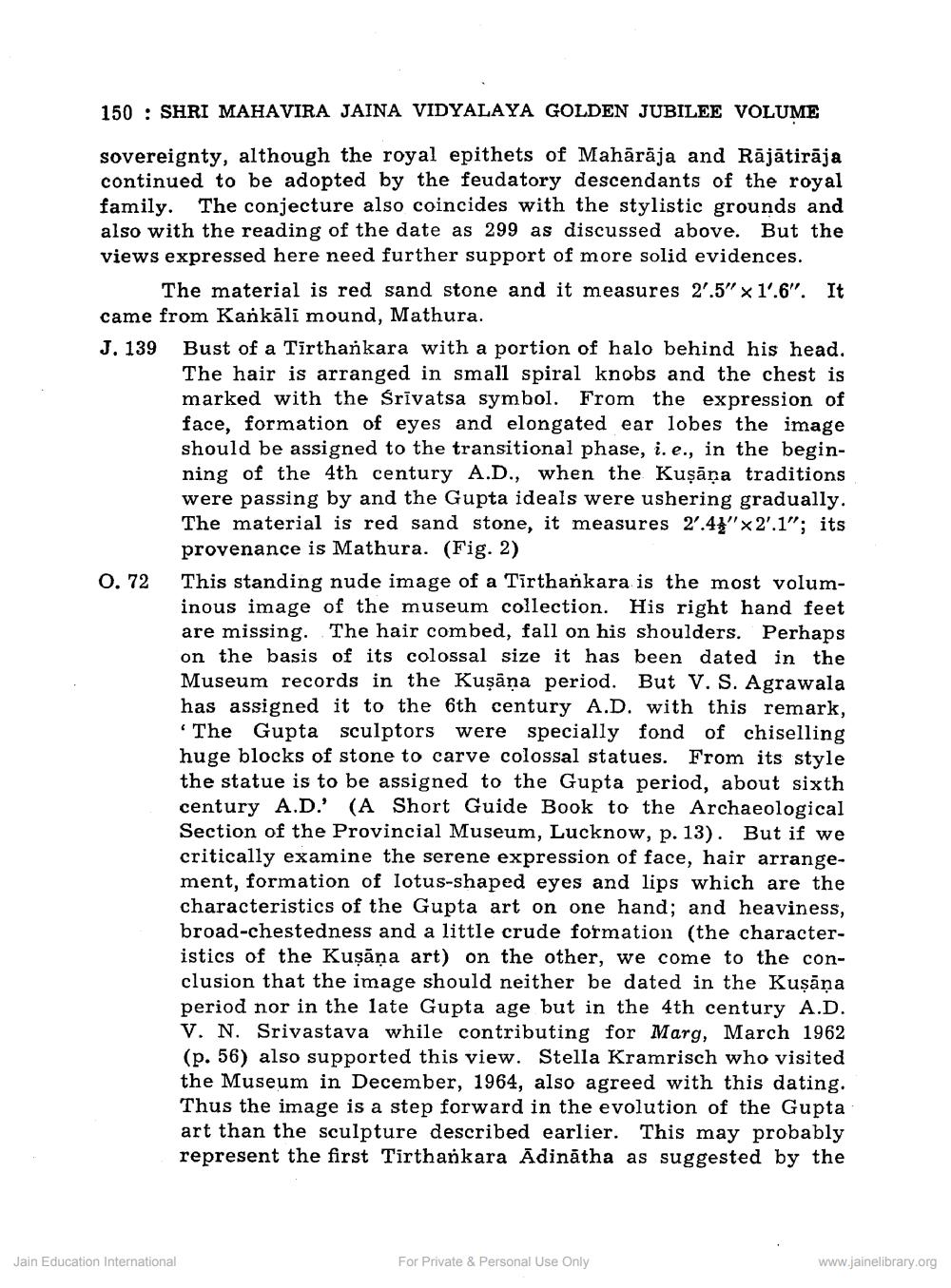________________
150 : SHRI MAHAVIRA JAINA VIDYALAYA GOLDEN JUBILEE VOLUME
sovereignty, although the royal epithets of Mahārāja and Rājātirāja continued to be adopted by the feudatory descendants of the royal family. The conjecture also coincides with the stylistic grounds and also with the reading of the date as 299 as discussed above. But the views expressed here need further support of more solid evidences.
The material is red sand stone and it measures 2.5" x 14.6". It came from Kankāli mound, Mathura. J. 139 Bust of a Tirthankara with a portion of halo behind his head.
The hair is arranged in small spiral knobs and the chest is marked with the Srivatsa symbol. From the expression of face, formation of eyes and elongated ear lobes the image should be assigned to the transitional phase, i.e., in the beginning of the 4th century A.D., when the Kuşāņa traditions were passing by and the Gupta ideals were ushering gradually. The material is red sand stone, it measures 2.4" x 2.1"; its
provenance is Mathura. (Fig. 2) 0.72 This standing nude image of a Tirthankara is the most volum
inous image of the museum collection. His right hand feet are missing. The hair combed, fall on his shoulders. Perhaps on the basis of its colossal size it has been dated in the Museum records in the Kuşāņa period. But V. S. Agrawala has assigned it to the 6th century A.D. with this remark, "The Gupta sculptors were specially fond of chiselling huge blocks of stone to carve colossal statues. From its style the statue is to be assigned to the Gupta period, about sixth century A.D.' (A Short Guide Book to the Archaeological Section of the Provincial Museum, Lucknow, p. 13). But if we critically examine the serene expression of face, hair arrangement, formation of lotus-shaped eyes and lips which are the characteristics of the Gupta art on one hand; and heaviness, broad-chestedness and a little crude formation (the characteristics of the Kuşāņa art) on the other, we come to the conclusion that the image should neither be dated in the Kuşāņa period nor in the late Gupta age but in the 4th century A.D. V. N. Srivastava while contributing for Marg, March 1962 (p. 56) also supported this view. Stella Kramrisch who visited the Museum in December, 1964, also agreed with this dating. Thus the image is a step forward in the evolution of the Gupta art than the sculpture described earlier. This may probably represent the first Tirthankara Adinātha as suggested by the
Jain Education International
For Private & Personal Use Only
www.jainelibrary.org




